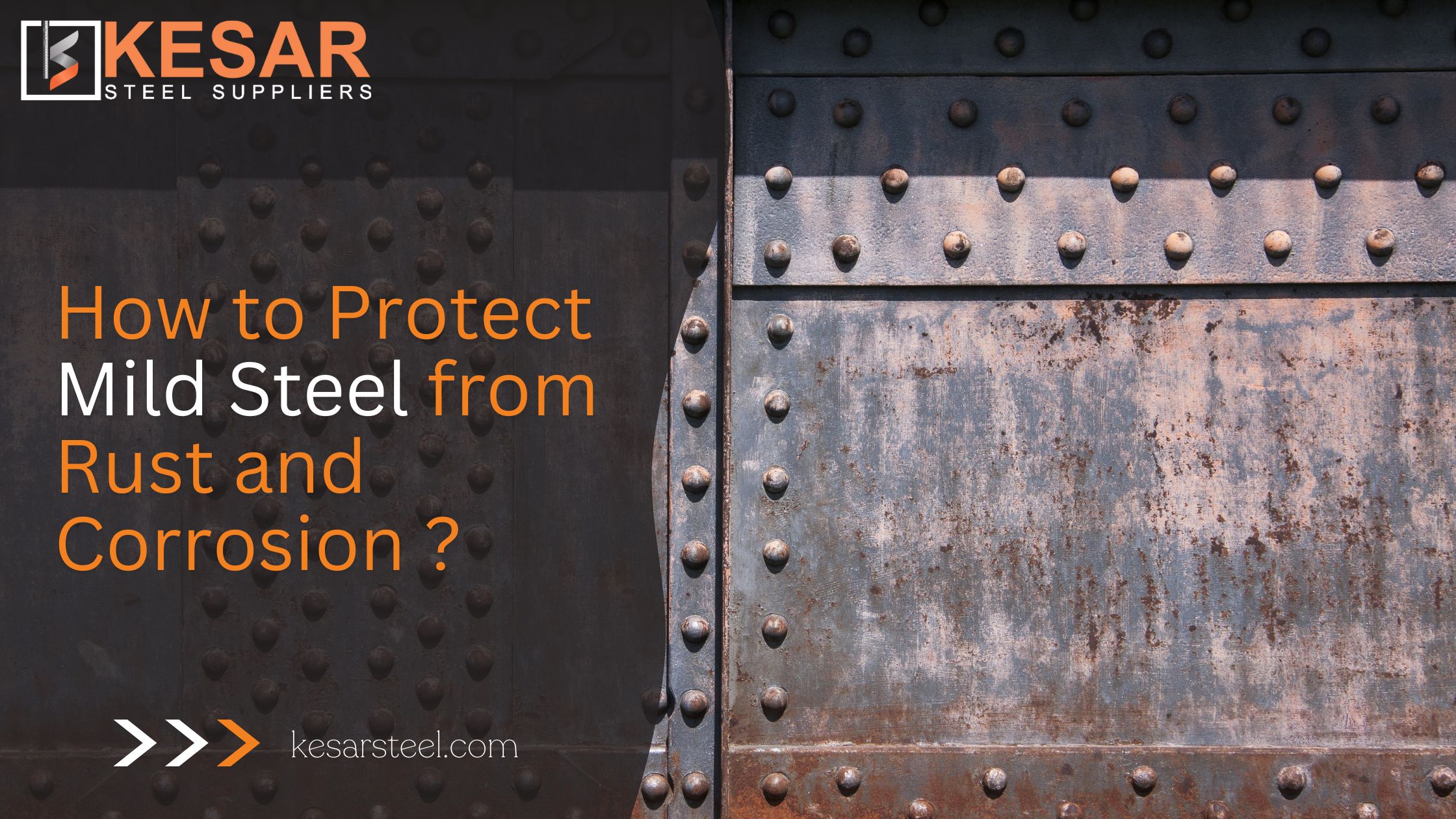How to Protect Mild Steel from Rust and Corrosion ?

9th Apr 2025
Mild steel (also known as MS steel) is a popular choice in construction, fabrication, and industrial applications due to its versatility and affordability. However, its low carbon content makes it susceptible to rust and corrosion—two natural enemies of steel that can compromise its strength and longevity.
In this blog, we’ll explore the causes of rust on mild steel, how to prevent corrosion, and why taking preventive measures is crucial for durability and safety. Whether you're storing steel plates or using MS beams in construction, these insights will help you make informed decisions.
What Causes Rust and Corrosion in Mild Steel?
Rust forms when iron in steel reacts with moisture and oxygen. This electrochemical process is accelerated by factors like humidity, salt, and pollutants in the environment.
Corrosion, a broader term, refers to the gradual degradation of metal due to chemical or electrochemical reactions. For mild steel, corrosion typically manifests as flaking rust, which not only affects the appearance but also weakens the structure.
Common causes of rust and corrosion in mild steel include:
- Exposure to water and humidity
- Contact with acids or salts
- Lack of protective coatings
- Improper storage practices
Understanding these factors is the first step in effective corrosion prevention.
Is Mild Steel Naturally Rust-Resistant?
Unlike stainless steel, mild steel is not rust-resistant by nature. It lacks chromium, the key element that provides stainless steel its anti-corrosive properties. This means mild steel will rust when left unprotected, especially in environments where moisture and air are present.
So, does MS steel rust? Yes. However, with the right protection methods, the process can be significantly slowed or even halted.
Top Methods to Protect Mild Steel from Rust
Several rust protection techniques are available to safeguard mild steel based on usage, exposure, and budget.
- Protective Coatings:
- Paint: One of the most cost-effective ways to shield mild steel. Specialized anti-rust paints form a barrier against moisture and air.
- Rust-resistant coating: Includes powder coatings and epoxy coatings designed for long-lasting protection.
- Protective coating for mild steel ensures a smooth finish while defending against corrosion.
- Galvanization:
- This involves coating the steel with a layer of zinc, which acts as a sacrificial metal and prevents rust formation.
- Ideal for outdoor applications and industrial-grade components.
- Oil and Grease Application:
- Temporary but effective for storage purposes.
- Forms a hydrophobic layer, making it harder for water to reach the surface.
- Cathodic Protection:
- Commonly used in pipelines and marine structures, it redirects corrosive elements away from the steel.
Protective Practices During Storage and Handling
Even the most effective anti-corrosion coating can fail if your steel is stored poorly. Here’s how to protect your materials before they even enter service:
- Keep steel indoors in a low-humidity, well-ventilated area.
- Use pallets or wooden planks to avoid contact with wet surfaces.
- Cover with plastic or tarpaulin during transit or long-term storage.
- Ensure coatings remain intact and are reapplied if scratched or worn.
Proper handling can prevent premature steel corrosion and maintain product quality.
Corrosion-Resistant Treatments for Industrial Use
For heavy-duty industrial applications, more robust corrosion-prevention methods may be needed:
- Zinc-Rich Primers: Ideal for steel bridges, towers, and high-exposure zones.
- Hot-Dip Galvanizing: Suitable for structural MS beams and columns.
- Metal Plating (e.g., Nickel or Chrome): Used in automotive and precision machinery for both function and aesthetics.
Industries dealing with mild steel corrosion should consider combining surface treatments with smart storage and maintenance protocols.
Choosing the Right Protection Method Based on Application
Every project is unique. Selecting the best rust treatment for mild steel depends on:
- Exposure: Outdoor or indoor?
- Function: Structural support or decorative?
- Budget: Are upfront costs or long-term maintenance more critical?
- Lifespan: How long do you need it to last?
For example, galvanized coatings are ideal for long-term exposure, while a quick anti-rust paint might be enough for temporary structures.
If you're unsure which corrosion prevention strategy to choose, it’s always best to consult with your supplier.
How Kesar Steel Ensures Quality and Durability
At Kesar Steel, we don’t just supply mild steel—we deliver materials prepared to withstand real-world conditions.
- Our MS steel products are treated with quality-assured rust protection techniques.
- We follow IS standards and offer various protective finishes based on your application.
- Whether you're sourcing steel plates, beams, or bars, you can trust that each product is checked for resistance and long-term performance.
Kesar Steel supplies IS-standard MS round bars in a variety of sizes and thicknesses, suitable for fabrication, industrial machinery, and construction work.
Conclusion
Mild steel is a workhorse material—but it needs care. From choosing the right protective coating for mild steel to adopting smart handling practices, you can significantly reduce the risk of mild steel rust and corrosion.
Remember: a little investment in protection now saves a lot on repairs later.
Need rust-proof mild steel? Contact Kesar Steel today for IS-certified MS steel with long-lasting durability and corrosion protection.






